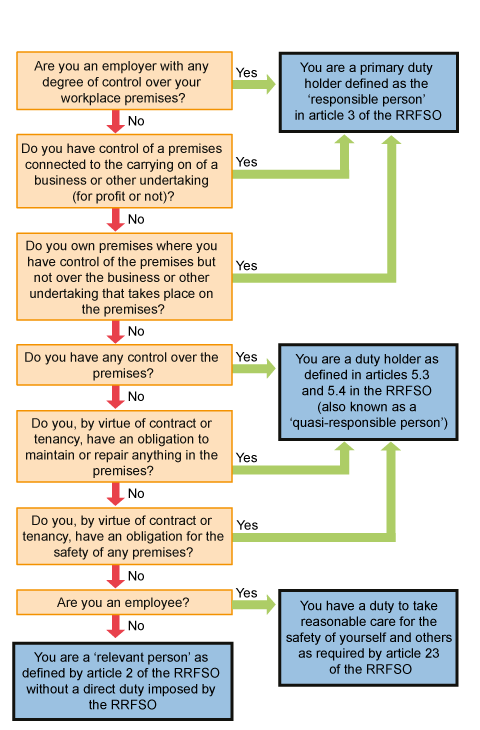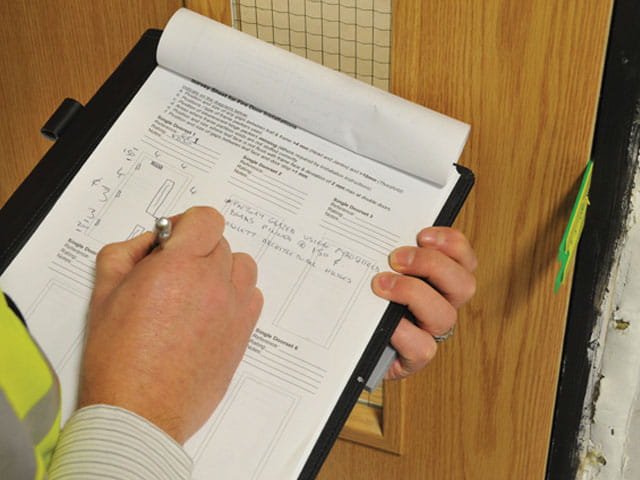Looking For More Information?
Contact Our Team
Getting Started With Fire Protection
Important changes in fire legislation affect your responsibilities as duty holder. If you haven’t carried out your legal responsibilities under the RRFSO with due diligence, the consequences of a fire are more likely to be catastrophic. Experts Peter Barker and Ross Newman set the scene.
The Regulatory Reform (Fire Safety) Order (RRFSO) imposes essential duties and responsibilities for the protection of people from fire in all premises other than private homes. The RRFSO takes a broad view of responsibility; some may not realise they have legal responsibilities for fire protection.
In response to the independent review of building regulations and fire safety and the recommendations made by Dame Judith Hackitt on the future regulatory system for buildings, the UK Government has introduced significant changes to the building regulations for both new and existing buildings. The new legislation amends the RRFSO and introduces additional requirements placed upon duty holders as identified by the RRFSO.
Learn more about the key Acts associated with the Regulatory Reform
Building Safety Act 2022
The Building Safety Act (BSA) received Royal Assent on 28 April 2022. The BSA has a broad scope applicable to new and existing buildings and contains provisions that impact on the requirements of the RRFSO.
Fire Safety Act
The Fire Safety Act 2021 (FSA) received Royal Assent on 29 April 2021 and has a narrower scope than the BSA. The FSA clarifies the parts of a premises that apply under the RRFSO with respect to multi-occupancy buildings, such as external walls and flat entrance doors, and has made specific amendments regarding compliance with risk-based guidance that has been considered appropriate by the Secretary of State.
Fire Safety (England) Regulations 2022
The Fire Safety (England) Regulations 2022 (FSR) are mandatory from 23 January 2023 in England, were made under article 24 of the RRFSO and apply to residential buildings, with different requirements linked to the height of the building.

Figure 1: Guide to determining responsibilities under the RRFSO. Owing to the ‘catch all’ nature of the RRFSO, there will be situations that the above chart does not address.
Why is fire protection important?
Unfortunately, fire is always a threat and so premises must be protected. Fire protection is a bit like an insurance policy: the costs are irretrievable and the benefits only felt in the event that you suffer a fire, which might never happen. If it does, of course, you will be very glad you did protect yourself: people are much safer, the fire is far less damaging, and business returns to normal more quickly.
If you haven’t carried out your legal responsibilities under the RRFSO with due diligence, the consequences of a fire are more likely to be catastrophic. Deaths and severe casualties among friends, colleagues and anyone else who happens to be present at the time are a very real possibility. Added to that are existential threats to your ‘undertaking’ – usually a business – and the probability of prosecution with attendant penalties of fines and jail terms.
So, while having to consider fire risks may not be welcomed amid all the other competing priorities in your life, the consequences of not doing so are so severe that you cannot afford to ignore them. It ceases to be primarily a legal duty and instead is one of common sense. The precautionary principle applies absolutely.
What do you need to know?
The way the RRFSO is framed puts the duty of responsibility for fire safety on ordinary non-specialists like you. This duty can be very onerous; it requires a broad understanding of many specialist technical subjects, all of them a field of expertise by themselves:
• The legal position: including your liabilities under the RRFSO and with your insurers
• The management of fire safety: including training, maintenance of measures, regular inspections, updating emergency plans, checking compliance
• Fire risk assessment: including knowing how to identify hazards and the best way to deal with them
• How fires occur and spread: including an understanding of the physics of ignition, the products of fire, and the fire resistance of different materials
• Effects of fire on people and their behaviour: including both physiological and psychological issues
• Fire prevention: including managerial, behavioural and technical aspects and how they should work together
• Passive fire protection: including how to optimize engineered solutions that take account of how buildings work
• Active fire protection: including complexity in understanding how to fight different kinds of fire and the best methods for achieving that
• Means of escape: including the most effective ways to evacuate people safely from buildings and account for them.
Doing all that is reasonably practicable
Regardless of the RRFSO, you will want to do what is reasonably practicable to ensure the safety of people you are responsible for in the event of fire, while spending budgets wisely. The RRFSO merely makes this law.
The definition of what is reasonably practicable is open to interpretation and in the event of a prosecution you have to prove that you acted with due diligence.
There is a lot to consider, much of it requiring considerable baseline knowledge, experience and expertise - competence. The RRFSO recognises this and will be amended by the BSA to clarify the requirement for using competent persons when making or reviewing a fire risk assessment under article 9 of the RRFSO.
Sometimes, though, even if you yourself are competent, you must still seek help. Indeed article 18 of the RRFSO requires you, with a few exceptions, to appoint competent persons to help you 'undertake the preventive and protective measures'.
Remember, liability for the fire safety of people in and around your premises remains yours under the RRFSO, even if it is sometimes shared with others.
Recommended Further Reading
This article is based on an extract from the book: Getting started with Fire protection - your responsibilities under the Regulatory Reform Fire Safety Order (RRFSO), 2nd edition.
Find related Resources
